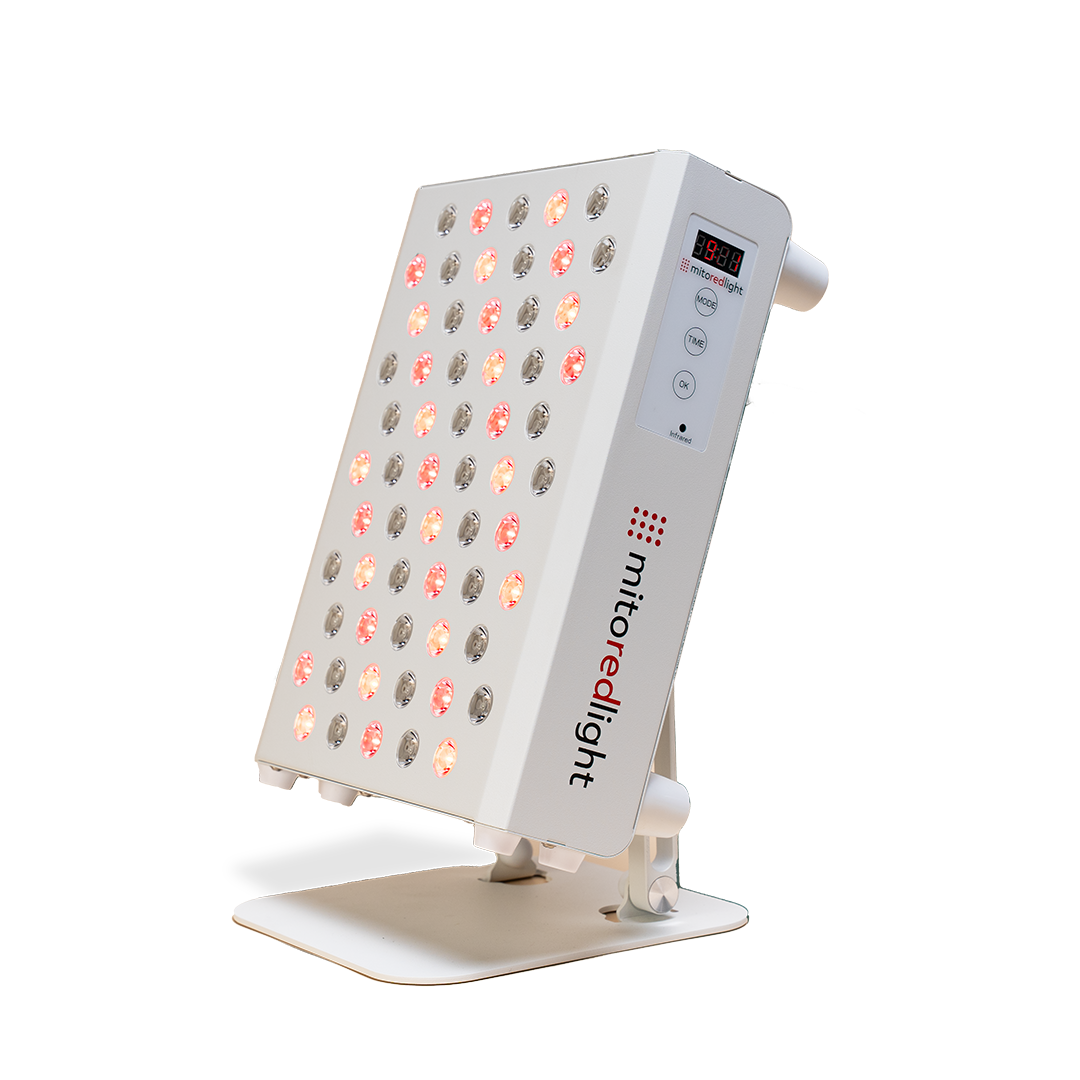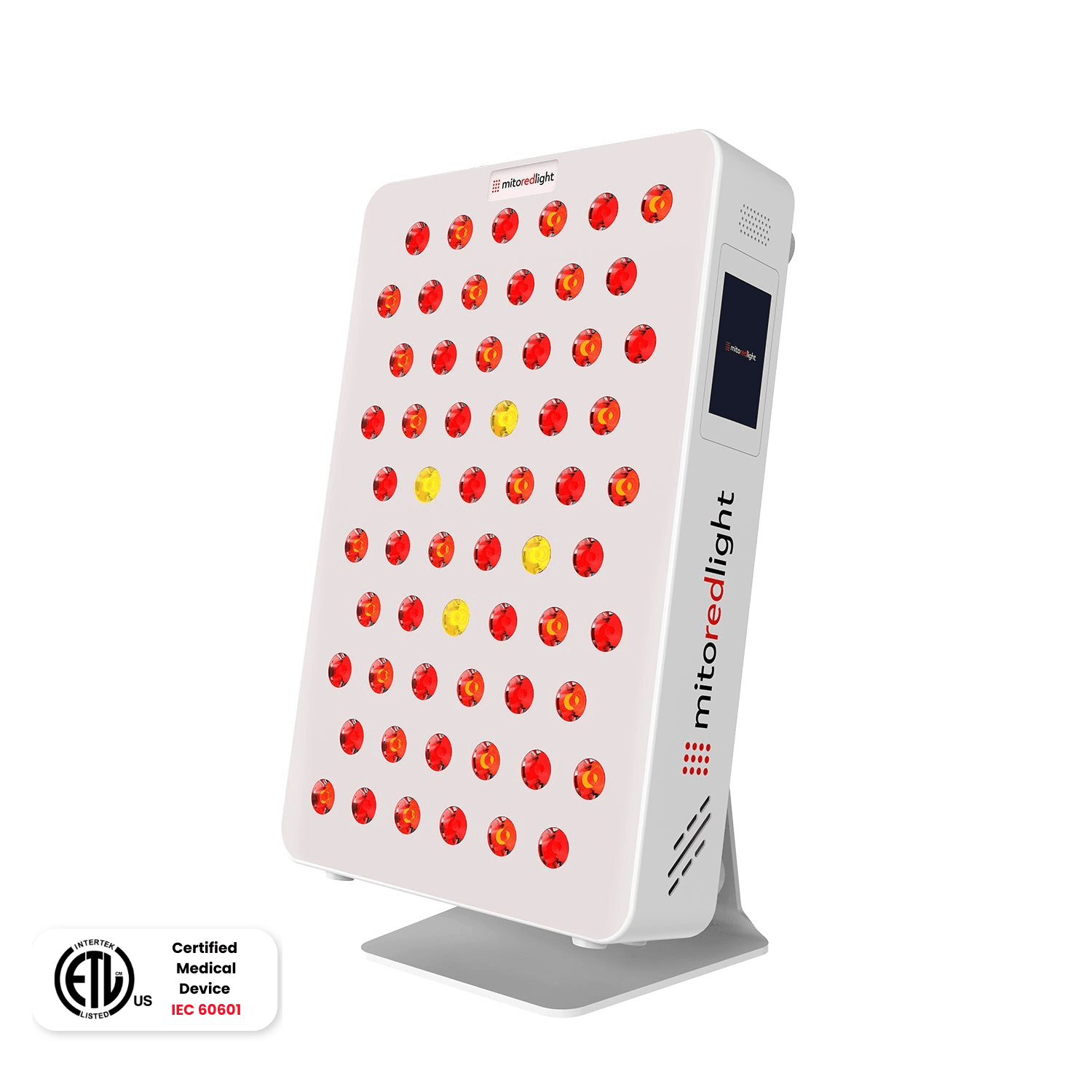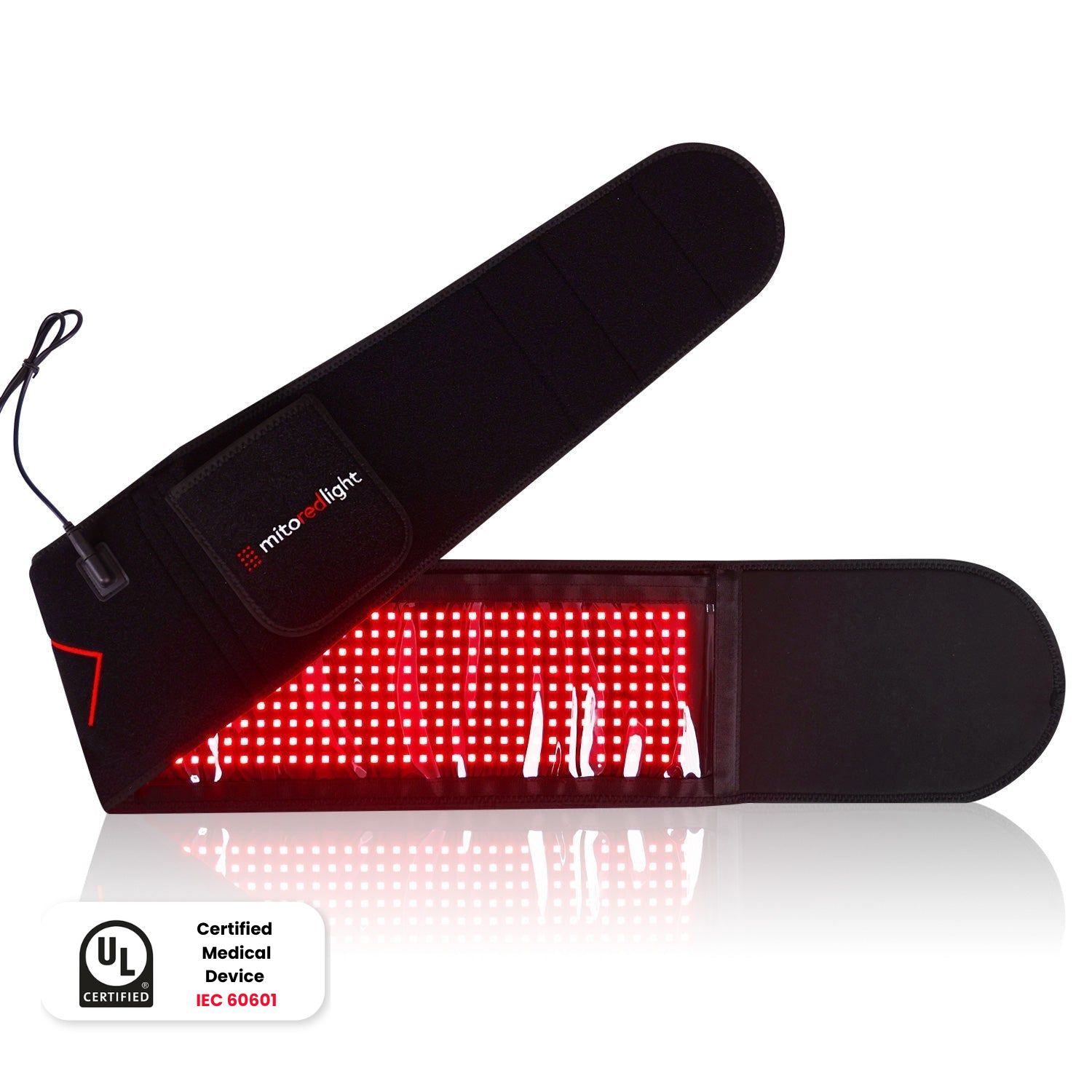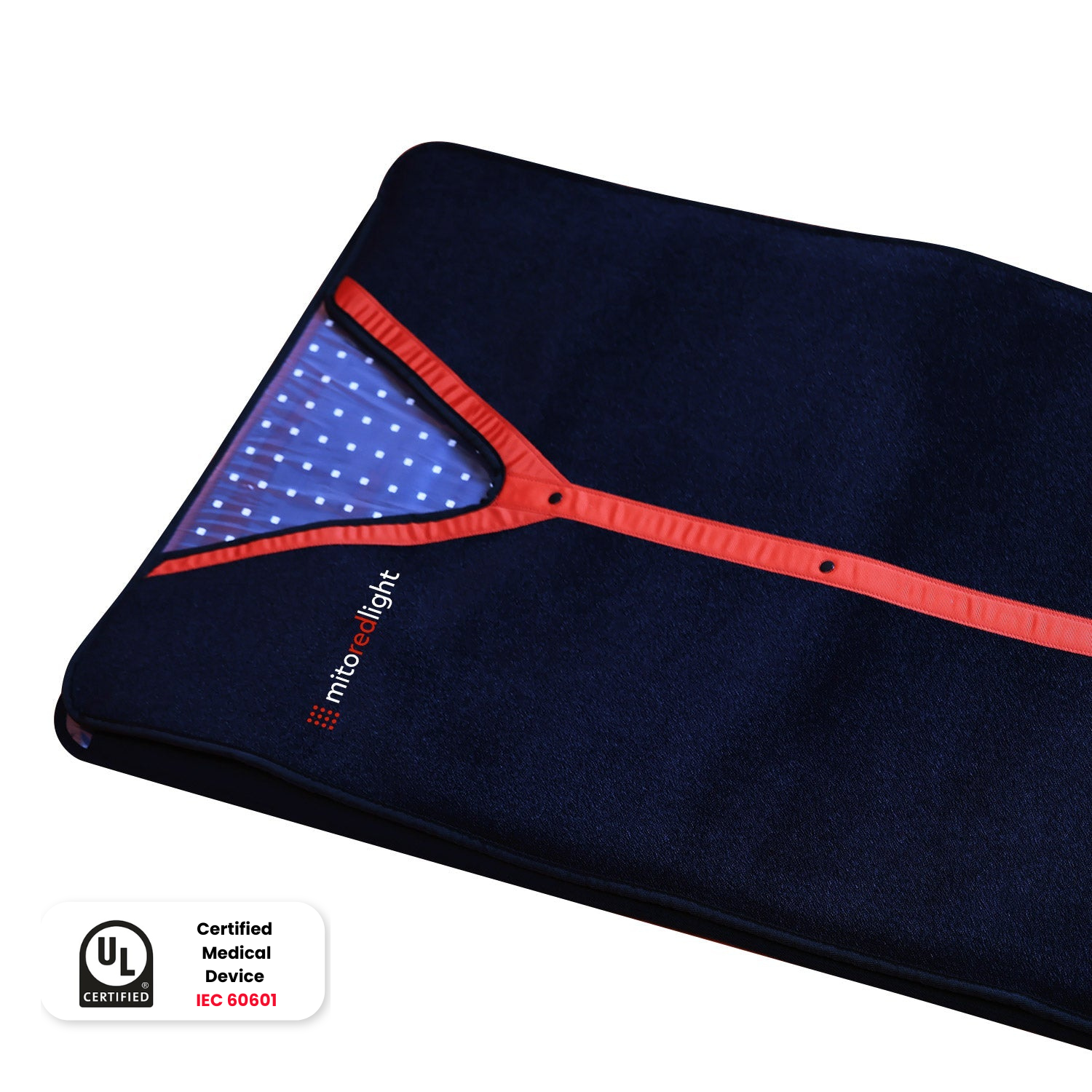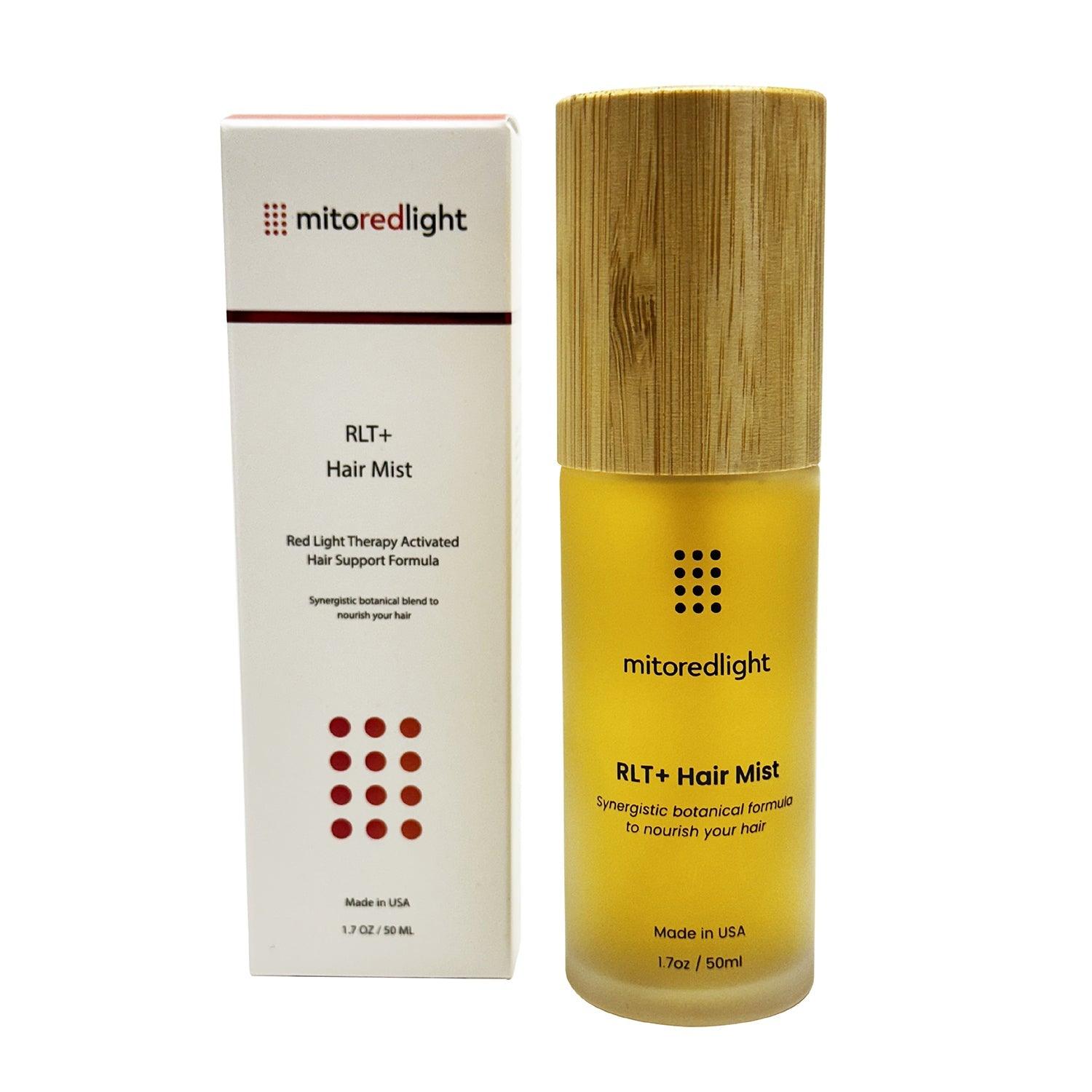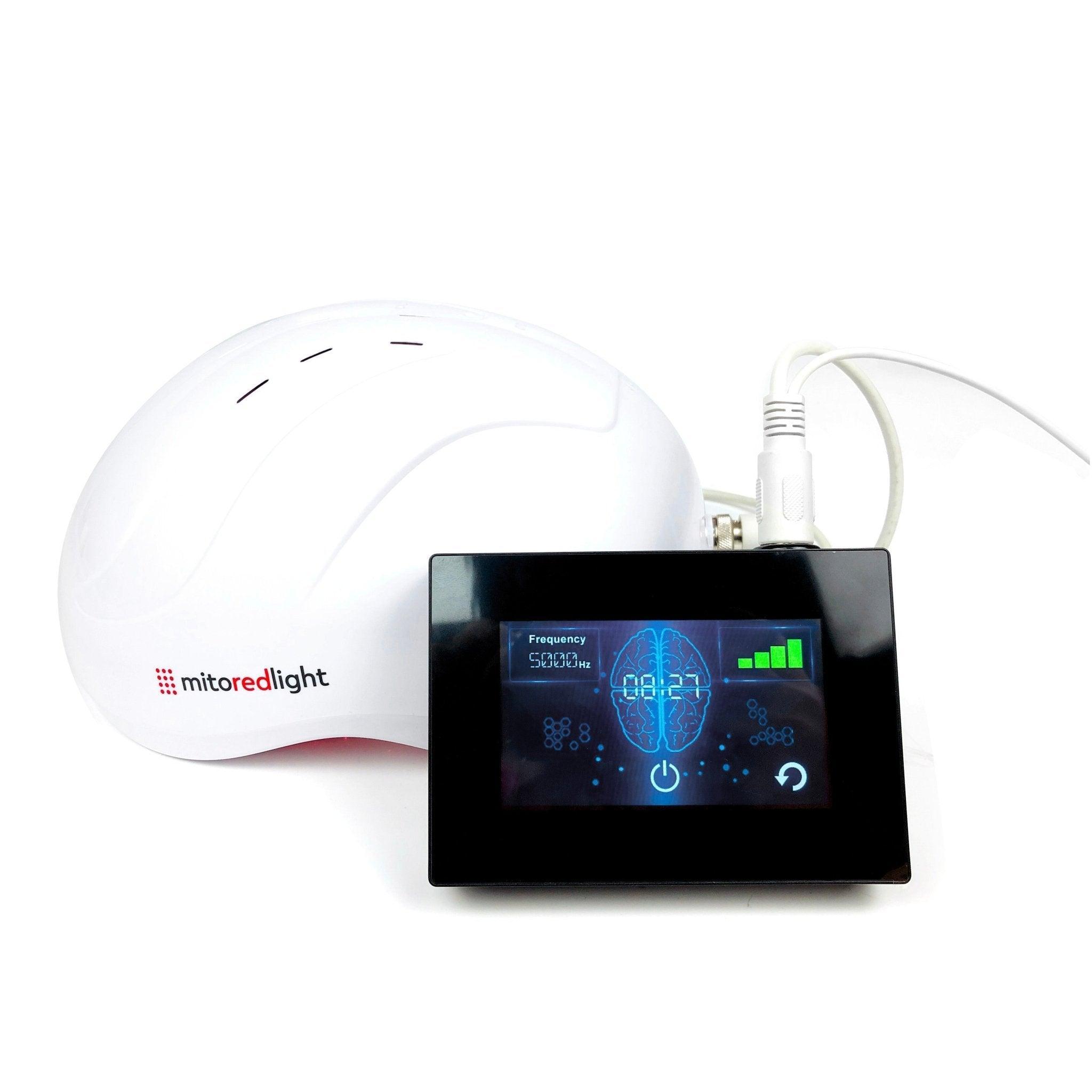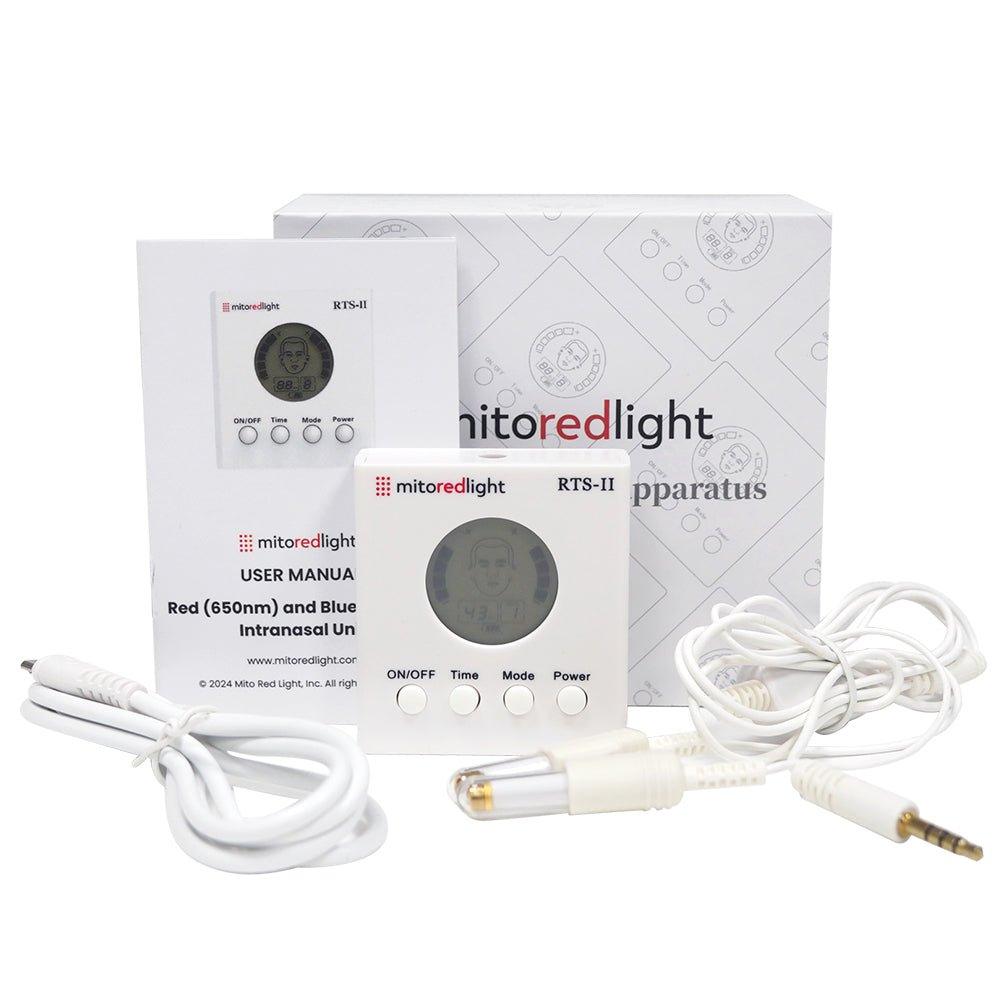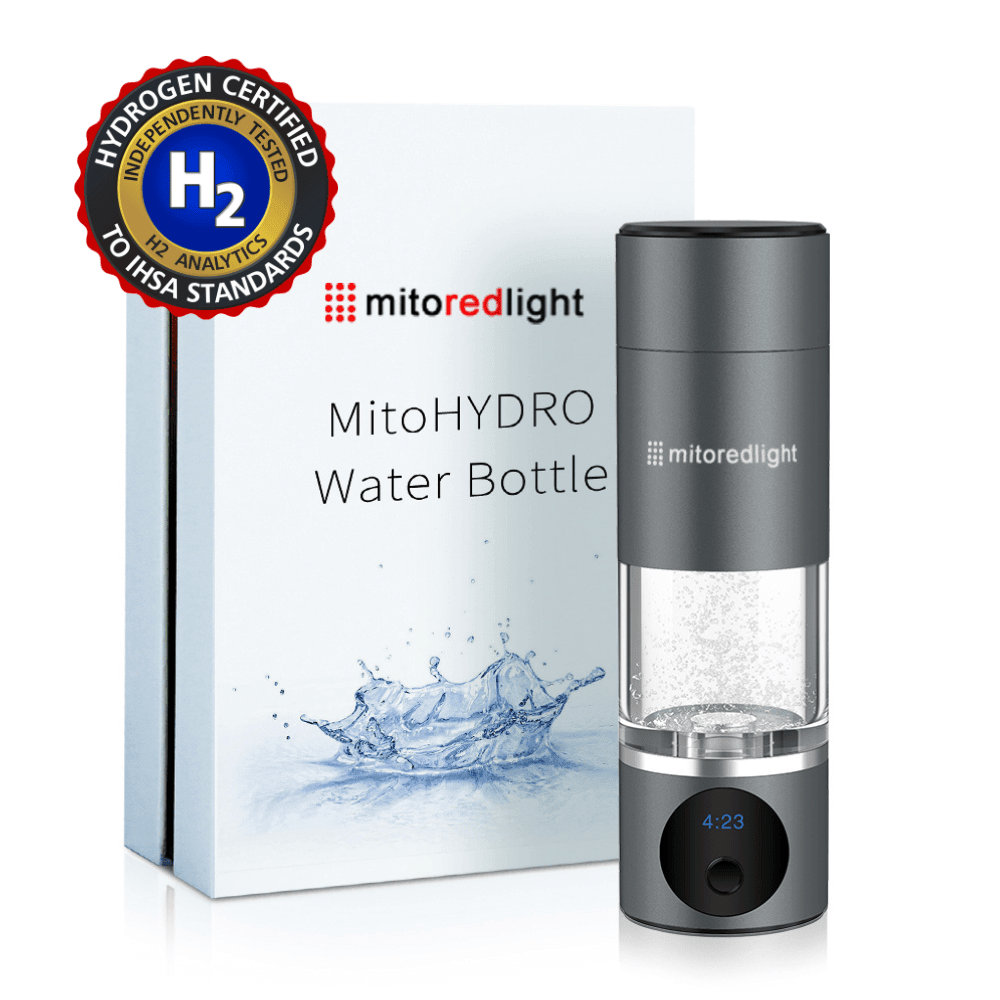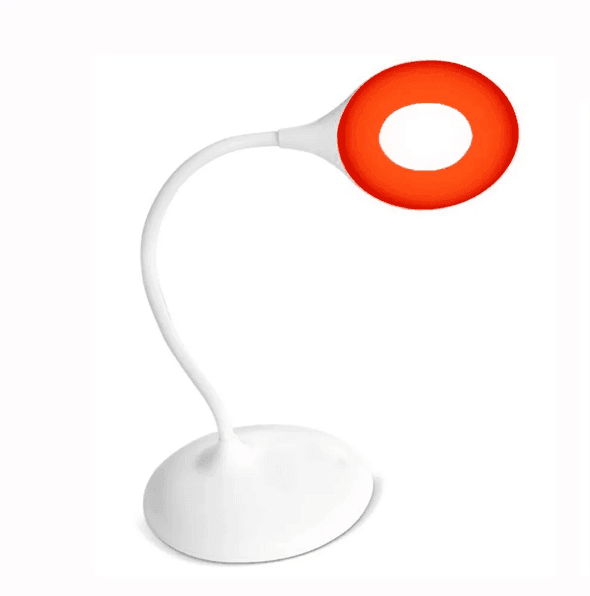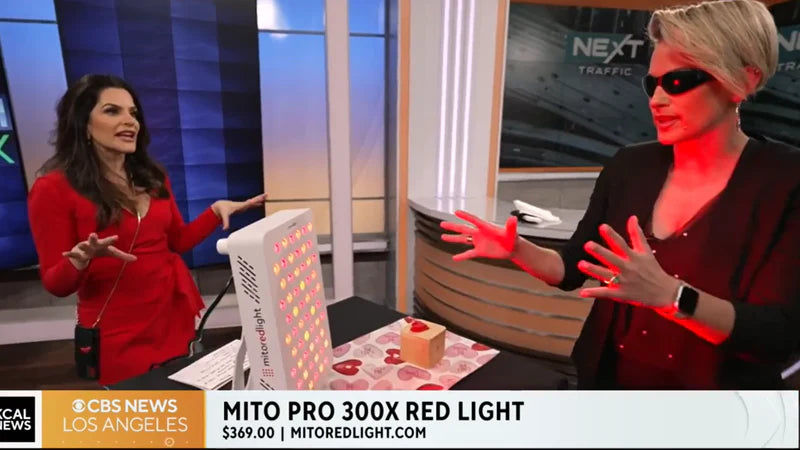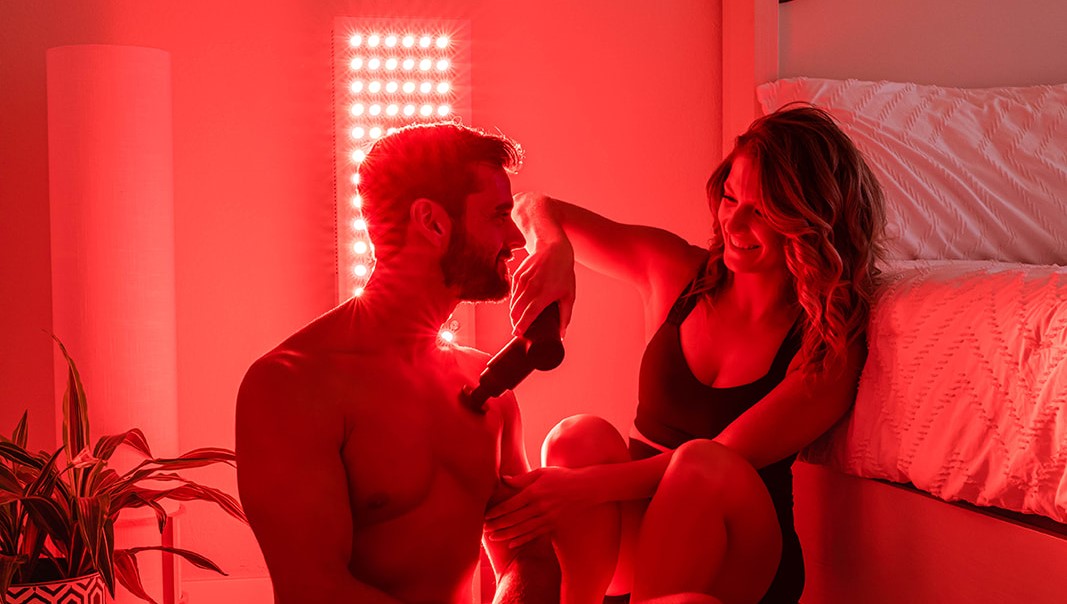Red light therapy is growing fast for skin glow, recovery, and overall wellness.
Choosing between clinic visits and a home device comes down to your goals, budget, and routine — good home units can deliver strong long-term value.
Who Can Benefit From Red Light Therapy?
Red light therapy can offer benefits for a variety of different purposes or wellness desires. If you’re looking to level up your everyday wellness routine, red light therapy could be a perfect addition.
People Who Value Simple, Consistent Wellness Routines
If you’re the “little-and-often” type, red and near-infrared (NIR) light sessions can slot neatly into a daily or near-daily routine at home.
Because results build with consistency, the biggest winners are people who will actually use a device as instructed (think 5-10 minutes per targeted area, at the recommended distance, several days a week). Sessions are quiet, non-UV, and pair well with habits like stretching, mindfulness, or post-shower wind-downs.
Active Individuals Focused On Recovery Habits
Recreational lifters, runners, cyclists, and weekend athletes often stack red/NIR sessions around training days to support their recovery routines. In general, red and NIR light are known to support circulation and help with inflammation, which may provide temporary relief of minor aches after hard efforts.
The key is to follow your device’s guidance on distance and session length rather than assuming more is better. Over time, many users report that building a predictable cadence matters more than chasing “max power.”
Skincare Enthusiasts
If your goals are about how your skin looks and feels — tone, texture, and overall glow — light-based routines can be a good fit alongside sunscreen, gentle cleansers, and healthy sleep.
Users commonly focus on the face, neck, and décolletage with short sessions several times per week. Expect gradual changes: think weeks to months, not overnight.
Keep the LEDs at the instructed distance, avoid staring into the light, and pair with a straightforward skincare routine to keep things gentle and sustainable.
Scalp and Hair-Appearance Routines
People building a hair-focused routine (brushing, gentle shampoos, smart styling, and patient timelines) often add light sessions for the scalp. Consistency is essential here as well — small, repeated exposures over months.
For targeted scalp use, dedicated headgear or focused panels make positioning easier. As always, follow the device’s usage times and protect the eyes during sessions.
Older Adults Prioritizing Ease and Comfort
Light sessions are quiet, non-invasive, and easy to set up, appealing to users who want low-friction wellness habits at home.
The gentle warmth and circulation support can make a routine feel soothing, especially when paired with light mobility work or an evening relaxation ritual. As with any new routine, it’s a good idea to consult a healthcare professional about personal considerations and medications before you begin.
What Happens During a Red Light Therapy Session?
“Photobiomodulation” (PBM) refers to applying low‑level red and near‑infrared light to body surfaces to support healthy cellular processes.
A large body of mechanistic work points to light-tissue interactions involving mitochondrial chromophores and downstream signaling (i.e., ATP dynamics, reactive oxygen species signaling, nitric oxide-related vasodilation), which can influence circulation and inflammation pathways.
- Circulation support: Studies identify NO‑linked vasodilation mechanisms with red light (≈670 nm) in vivo, which helps explain commonly observed increases in microcirculation during or after sessions.
- Inflammation : Reviews summarize anti‑inflammatory effects of PBM across tissues, which is one reason wellness users pair red/NIR with pain and inflammation management routines.
The science is promising in some areas and mixed in others. Evidence quality varies by application, so set expectations accordingly and build consistency.
What the Evidence Says About Red Light Therapy
Red light therapy may be beneficial in a variety of key ways. Here’s just some of what the science says:
- Skin appearance: A randomized controlled trial found improvements in fine lines, skin roughness, and intradermal collagen density after a series of red/NIR sessions.
- Breakouts: A systematic review/meta‑analysis of at‑home LED devices reports reductions in breakouts, with safety considered acceptable in the included trials.
- Hair growth: Meta‑analyses and reviews show increases in hair density vs. sham for pattern hair loss. Research is evolving on optimal device designs and pairings.
Many other use cases are being explored, but stick to well‑studied areas, follow instructions, and consult your provider if you have questions.
Home vs. Clinic Red Light Therapy: Side‑by‑Side Comparison
Understanding the practical differences between home and clinic sessions helps users make informed decisions based on priorities, budget, and lifestyle.
|
Factor |
Home Panels |
Clinic Sessions |
|
Intensity |
30-40 mW/cm² (quality devices like Mito Red Light) |
Substantially higher intensities |
|
Session Length |
10-20 minutes |
Varies, often shorter due to higher power |
|
Frequency |
3-5 times per week |
Typically weekly |
|
Timeline |
8-16 weeks for results |
Faster initial results |
|
Cost |
One-time device investment |
$75-$110 per session |
|
Convenience |
Use any time at home |
Appointment scheduling required |
|
Coverage |
Depends on panel size |
Professional full-body systems |
Light Intensity and Wavelength Precision
In-office LED/PBM systems are typically higher-power than consumer devices, so clinics can generally deliver target doses over larger areas in shorter times.
Both clinic and home devices are designed to emit within the red and near-infrared PBM window. A recent dermatology consensus places commonly used bands in red 620-700 nm and NIR 700-1440 nm, reflecting the biologic “optical window” where tissue penetration and light-tissue interactions are favorable.
Quality devices (home or clinic) aim for similar discrete peaks. The key practical difference is usually output and coverage, not the nominal wavelengths themselves.
Session Length, Frequency, and Expected Outcomes
Professional systems can deliver target exposures quickly (often 10-20 minutes for facial work) because power and coverage are higher.
In-office protocols commonly use short appointments with larger areas addressed per visit. At home, users typically apply shorter sessions per area and rotate regions, following the device manual. Always follow manufacturer-recommended times rather than extending sessions.
Clinical care overviews emphasize ongoing series — often one to three visits per week for weeks to months, sometimes followed by periodic maintenance.
Home routines rely on regular, repeated use (like several days per week), which is often easier to sustain and is central to outcomes in light-based wellness.
Timeframes depend on goal, adherence, and coverage. A randomized controlled trial of polychromatic red/NIR exposure reported improvements in skin roughness and collagen metrics after a multi-week series (twice weekly), illustrating how repeated sessions can influence skin appearance over time.
For at-home LEDs, one study found reductions in acne lesion counts across included trials, again contingent on consistent use. Individual responses can vary, and results typically accumulate over weeks to months rather than after a single visit.
User Experience, Safety Controls, and Maintenance
Clinics provide staffed setups, larger fixtures, and guided positioning so that sessions can feel hands-off and quick.
At home, ease comes from convenience and cadence (no travel, simple routines), which is crucial because light-based wellness depends on regular use. In-office systems are typically more powerful, while home devices are generally safe but less powerful — meaning consistency matters more at home.
Red light therapy is a safe option, but it’s important to use eye protection, follow the device manual if you’re doing it at home, and be cautious if you’re taking photosensitizing medications or have light-sensitive conditions.
Clinics handle calibration, sanitation, and upkeep for you. At home, you’re responsible for basic care (keeping lenses/emitters clean, storing the unit safely, checking cables/stands) and for using the device as instructed. When devices are used properly, at-home red light sessions are safe and effective.
Up‑Front Device Cost Versus Per‑Session Clinic Fees
Clinic pricing is pay-as-you-go. Red/LED light sessions can cost about $80 or more each, with broader national estimates ranging ~$43-$243 per session, depending on setting and add-ons.
Over a month, even one visit per week (~4×) can approach $320+, and “intensive” blocks (3-4×/week) scale quickly.
At home, you only pay once for the device (and only pennies of electricity per session). For instance, one of our MitoPRO+ panels at $1,169 would roughly equate to ~15 clinic sessions at $80 each.
Clinics convert cash to convenience per visit, which can be ideal for short, guided blocks. At home, the one-time purchase can be more economical if you’ll use it regularly over months — especially for multi-goal or household routines where sessions add up.
Space‑Saving Designs for Small Rooms and Studios
Space-saving designs for small rooms and studios. Clinics often dedicate a full room to large fixtures (like full-body panels/beds). Many professional systems can be impractical to replicate in tight home spaces.
In-office LED systems are typically more powerful than at-home options — another reason clinical units tend to be larger, immobile installations.
By contrast, at-home setups can be built around modular, compact panels and space-efficient mounts. Mito Red Light offers multiple mounting choices designed for small footprints, like a floor stand that parks a single 750/1500 panel in a corner and a universal stand that can be configured vertically or horizontally to fit under lofted shelves or alongside a wall.
For very small studios, a single MitoPRO+ panel can live on a stand and roll between rooms., Multi-panel arrays are optional rather than required, letting you scale coverage only if your space allows.
Choosing the right device for your needs
Device selection should align with primary health goals, available space, and commitment to consistent protocols.
At Mito Red Light, we offer a wide range of options, like:
- MitoPRO+ Series for Everyday Routines: Four purposeful wavelengths (630, 660, 830, 850 nm); multiple sizes from targeted to mostly full‑body. If you’re building a consistent home routine, start here.
- MitoPRO® Mobile for Portable Sessions: Patented portable with five wavelengths and 10 Hz NIR pulse mode; good for travel or desk setups.
- MitoQUAD™ Belt for Hands-Free Use: Hands‑free quad‑wavelength belt for abs/low‑back routines.
- MitoMAT™ Full‑Body Mat: Portable full-body targeting, 3,740 LEDs (red + NIR).
The Bottom Line
In the end, choosing between home and in-clinic red light therapy comes down to consistency, convenience, and coverage.
Clinics typically offer higher-power, large-area systems that can deliver target exposures quickly across more of the body. That can be appealing for short, guided blocks or when you want staff to help with positioning and settings.
At home, the advantages are different, but just as (if not more) compelling. A one-time device purchase lets you build a steady rhythm of short sessions several days a week without travel or scheduling friction, which is often the deciding factor for light-based routines. Home setups are also easier to scale to your space and goals — starting with a compact panel and expanding only if you need more coverage.
No matter where you choose to have your sessions, the same best practices apply: protect your eyes, follow the device’s recommended times and distances, and resist the urge to extend sessions beyond the manual. With photobiomodulation, more isn’t automatically better.
For at-home red light therapy you can trust, shop Mito Red Light.
DISCLAIMER : Mito Red Light devices are Class II wellness devices aimed at affecting the body through supporting cellular function. The information provided in this article and on this site is for educational purposes only and is not intended to imply effectiveness of Mito Red Light devices for any specific application. The information provided in this article and on this site is not intended to diagnose, treat, cure, or prevent any disease, is not a substitute for consultation with a licensed medical provider and should not be construed as medical advice. Click here to read our article on potential contraindications of red light therapy.
FAQs
How do I safely set up a red light panel at home?
Position the panel 6-12 inches from the targeted area, wear protective eyewear, and avoid staring directly into the LED arrays. Start with 10-minute sessions and increase gradually as tolerated, ensuring the mounting system is stable.
Are home devices as effective as clinic sessions?
Home panels can be effective with consistent use, though clinics often provide higher intensities for faster results. Quality home devices, like Mito Red Light, delivering 30-40 mW/cm² can yield meaningful benefits over 8-16 weeks. Many users successfully combine home sessions with occasional professional sessions.
What dosage and session frequency should I follow?
Start with 10 minutes per area, three times a week, gradually increasing to 10-20 minutes, three to five times weekly as tolerated. Maintain consistent spacing between sessions and track progress over several weeks. Results typically become noticeable after 8-16 weeks of adherence.
What if I notice skin redness or eye discomfort?
Shorten session duration, increase distance from the panel, and ensure proper eye protection. Mild skin warming is normal, but persistent redness or eye discomfort indicates overexposure. If irritation continues, pause sessions and consult a healthcare professional before resuming.
Can I combine home therapy with occasional clinic visits?
Yes, many successfully use clinic sessions for intensive phases and maintain results with home panels. This hybrid approach balances session speed, cost management, and convenience. Consider monthly professional sessions paired with three to five weekly home sessions for optimal outcomes.
Sources:
Mechanisms and applications of the anti-inflammatory effects of photobiomodulation | Aimspress
Red light therapy: What the science says | Stanford
15986 Meta-analysis of photobiomodulation for the treatment of androgenetic alopecia | JAMA
LED Light Therapy: How It Works, Colors, Benefits & Risks | Cleveland Clinic
Photobiomodulation: Cellular, molecular, and clinical aspects | ScienceDirect
Evidence-based consensus on the clinical application of photobiomodulation | JAAD
At-Home LED Devices Reduce Acne Lesions in Meta-Analysis | Medscape
What Is Light Therapy? Types, Pricing and How it Works | Care Credit
